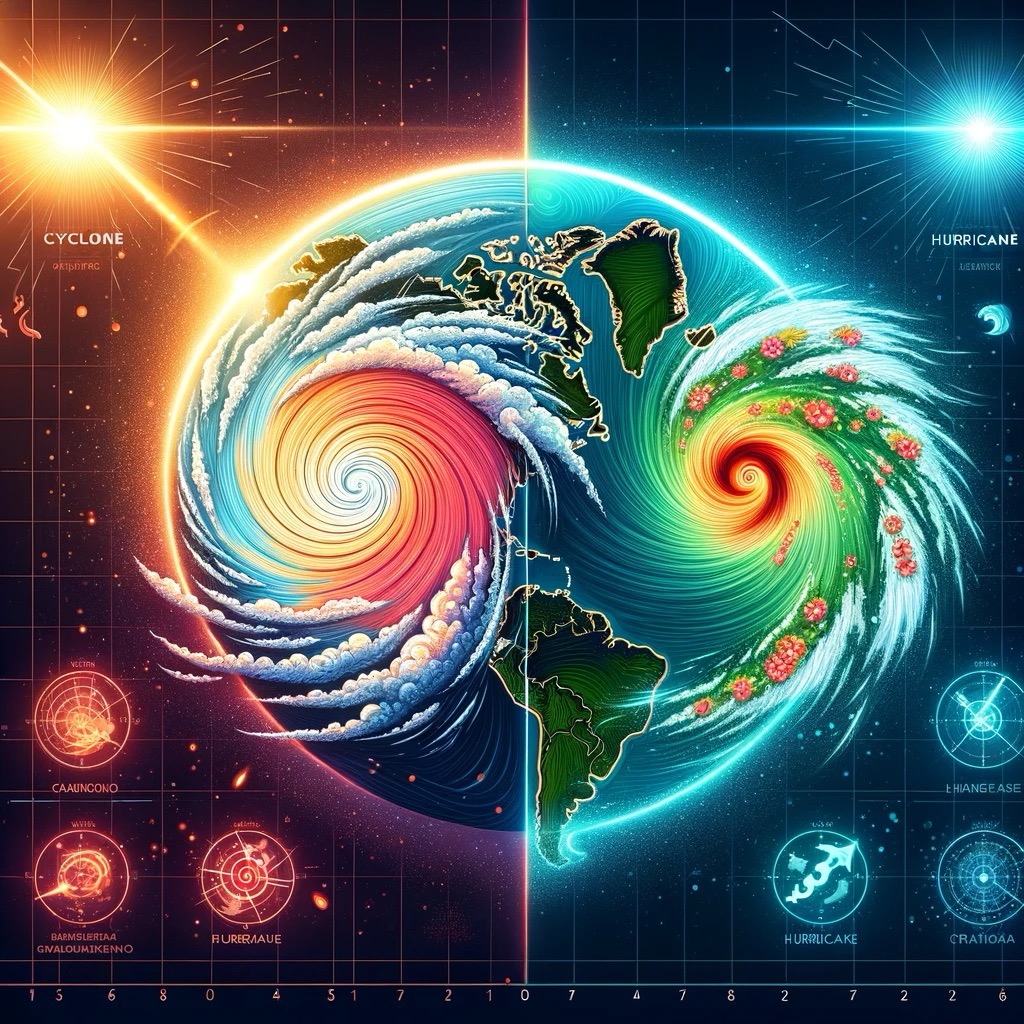Difference Between Cyclones and Hurricanes
by Yogi P - October 30, 2023
Difference Between Cyclones and Hurricanes | Cyclones vs Hurricanes
Cyclones and hurricanes are two types of powerful tropical storms that occur in different parts of the world, but they share many similarities due to their formation in warm ocean waters. Despite the similarities, they have distinct names based on their geographical location and characteristics. Let’s explore the differences between cyclones and hurricanes.
What is Cyclone?
A cyclone is a term used to describe a powerful rotating storm system that originates over the Indian Ocean and the South Pacific Ocean. Cyclones are referred to as “cyclones” in this region, but they are essentially the same as hurricanes and typhoons. Here are the key characteristics and details specific to cyclones:
| Aspect | Cyclone |
|---|---|
| Geographical Region | Occurs over the Indian Ocean and South Pacific Ocean. |
| Wind Rotation Direction | Cyclones in the Southern Hemisphere rotate counterclockwise. |
| Naming Convention | Named by the meteorological authorities in the affected regions. |
| Notable Cyclones | Examples include Cyclone Yasi and Cyclone Winston. |
Cyclones in the Southern Hemisphere exhibit counterclockwise wind rotation.
What is Hurricane?
A hurricane is a term used to describe the same type of tropical storm system that originates over the Atlantic Ocean and the northeastern Pacific Ocean. Hurricanes are known by this name in the Atlantic Ocean and the northeastern Pacific, but they are equivalent to cyclones and typhoons. Here are the key characteristics and details specific to hurricanes:
| Aspect | Hurricane |
|---|---|
| Geographical Region | Occurs over the Atlantic Ocean and northeastern Pacific Ocean. |
| Wind Rotation Direction | Hurricanes in the Northern Hemisphere rotate clockwise. |
| Naming Convention | Named according to a predetermined list of names maintained by meteorological authorities. |
| Notable Hurricanes | Examples include Hurricane Katrina and Hurricane Sandy. |
Hurricanes in the Northern Hemisphere exhibit clockwise wind rotation.
Key Differences:
Geographical Region:
- Cyclones occur over the Indian Ocean and the South Pacific Ocean.
- Hurricanes occur over the Atlantic Ocean and the northeastern Pacific Ocean.
Wind Rotation Direction:
- Cyclones in the Southern Hemisphere rotate counterclockwise.
- Hurricanes in the Northern Hemisphere rotate clockwise.
Naming Convention:
- Cyclones are named by meteorological authorities in the affected regions, and names can vary.
- Hurricanes are named from predetermined lists maintained by meteorological authorities, with names reused every few years.
Examples:
- Notable cyclones include Cyclone Yasi and Cyclone Winston.
- Notable hurricanes include Hurricane Katrina and Hurricane Sandy.
Conclusion
In summary, cyclones and hurricanes are essentially the same type of tropical storm, differing only in name and geographical region. Cyclones occur over the Indian Ocean and the South Pacific Ocean, while hurricanes occur over the Atlantic Ocean and the northeastern Pacific Ocean.
Despite these regional distinctions, both cyclones and hurricanes are characterized by strong winds and intense rainfall, making them formidable natural phenomena.










